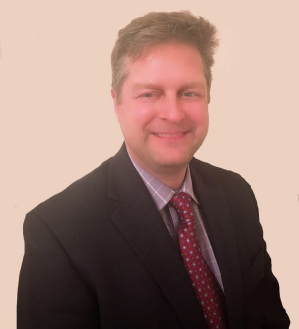Smoking linked to increased risk of eye disease

Cigarettes are often associated with lung cancer and heart disease. Did you know smoking also causes blindness?
Studies show that smoking may lead to age-related macular degeneration, cataracts, glaucoma, diabetic retinopathy and Dry Eye Syndrome. Many of these smoking-related eye disorders can result in permanent vision loss. Nonsmokers living with smokers are also at risk.
Age-related macular degeneration (AMD)
AMD begins as a loss of central vision that increases significantly over time. There are two types of AMD: dry and wet. Dry AMD is the most common.
In dry AMD, fatty deposits form under the retina, the cells in the back of the eye that sense light. Vision loss in dry AMD usually gets worse gradually. In wet AMD, tiny blood vessels under the retina rupture. The resulting scar tissue changes your vision and the damage occurs more quickly than with dry AMD.
Smokers are three to four times more likely to develop AMD than nonsmokers. Nonsmokers living with smokers almost double their risk of developing AMD.
Cataracts
Cataracts occur when proteins inside the lens breaks down, causing the lens to become cloudy. It happens naturally with aging and often gets worse gradually as we get older.
Heavy smokers (15 cigarettes/day or more) have up to three times the risk of cataract as nonsmokers. Furthermore, smoking can increase your chances of developing diabetes. Cataracts related to diabetes can form much faster that age-related cataracts.
Glaucoma
Glaucoma causes a gradual break down of the cells that make up the optic nerve. As the nerve cells die, vision is slowly lost, usually beginning with side vision. Loss of vision may not become noticeable until significant nerve damage has occurred. As many as half of those with glaucoma may be unaware that they have it.
There is a strong link between smoking and high blood pressure, cataracts and diabetes, which are all risk factors for glaucoma.
Diabetic Retinopathy
Diabetic retinopathy, a common complication of diabetes, causes tiny blood vessels of the retina to break down, leak or become blocked, resulting in a gradual loss of vision. In some people with diabetic retinopathy, serious damage to the eye can occur when new blood vessels grow on the surface of the retina.
Smoking can increase your chances of getting diabetes. It can also make managing diabetes more difficult for those who already have it. Complications of diabetes made worse by smoking include retinopathy, heart disease, stroke, vascular disease, kidney disease, nerve damage, foot problems and many others.
Dry Eye Syndrome
Dry Eye Syndrome appears as damaged blood vessels in the eye. This can lead to eye irritation, itchy and scratchy eyes, and burning sensation of the eyes.
Dry Eye Syndrome is more than twice as likely to impact smokers as non-smokers.
Kicking the habit can significantly decrease your risk of eye disease. Many smoking cessation programs are covered by insurance and Medicaid. Talk to your doctor about what medications and programs may be best for you.
—
NYS Department of Health
AAO
OSCD names Blake Peart as new CEO

After an extensive search, OSCD has named John “Blake” Peart, formerly of Kindred Healthcare in Mansfield, Texas, as its new Chief Executive Officer. In January, Blake accepted the position left vacant by Andrew “Andy” Summers, who died unexpectedly in May.
The months-long interview process did not deter Blake, who said the thorough search reassured him that finding “the right fit” was as important to OSCD as it was to him, especially under the circumstances.
“Not long after I accepted the position, I read through Andy’s memorial,” Blake said. “I could tell his loss was deeply felt, so first and foremost, I want to I extend my condolences to everyone at OSCD.”
Blake’s first day in the office was Tuesday, February 5. He said it has been a busy transition, and he looks forward to working with and getting to know the OSCD team and staff.
Blake has 18 years in senior management experience in healthcare. Most recently as CEO of Kindred Healthcare, he was recognized for “Best Hospital” for Employee Retention and Employee Satisfaction in 2018 from the Organization of LTACH Hospitals. Under his leadership Kindred Healthcare was awarded the 5K Hospital Quality Award for 2017 and 2018.
“As a new member of our team, Blake brings a wealth of knowledge from his experiences in hospital administration, business development, academic administration and as a respiratory therapist,” said Tim Szott, Vice President of Operations for Surgical Care Affiliates. “Blake is a valuable addition to our leadership team and I look forward to his future successes with OSCD.”
In addition to the quality accolades received at Kindred Healthcare, Blake increased physician recruitment by 27% over an 18 month period and increased the total number of procedures performed at the facility by approximately 32%.
Blake began his healthcare career in 2003 as a licensed respiratory therapist. After receiving his certification from Louisiana State University in Alexandria, Blake worked at Rapides Regional Medical and later became its Director of Cardiopulmonary. In 2007, he took a teaching position at LSU-A as a Respiratory Therapist Clinical Instructor. In 2008, Blake graduated with honors from University of Phoenix in Phoenix, Arizona with a bachelors degree in Healthcare Administration. The next year, Blake was named Program Director at Pima Medical Institute in Mesa, Arizona. In 2015, Blake and his family returned to Texas where he was named Director of Operations and Business Development at Kindred Healthcare in Arlington. He was later promoted to Hospital Administrator.
While the path may seem unconventional, Blake said his roles as a caregiver, teacher, director and administrator have shaped his approach to leadership and provided him with a unique perspective.
“In my career, I have had the privilege of working as a clinician and operator in health care,” he explained, “These hands-on experiences have given me a deeper understanding of outpatient services and how to better serve our patients needs.”
Furthermore, Blake emphasized, he is not the kind of administrator who spends most of his time in an office. “When possible, I prefer to be on the floor, interacting with the staff and meeting them where they are. In fact, I’ve been exactly where they are.”
When he is not in the office or on the floor at OSCD, Blake enjoys golfing, traveling, snow skiing and spending time at home in Arlington with his wife and 11-year-old daughter.
“I look forward to working with the OSCD team and our physician partners to support the quality care OSCD provides,” he said.


